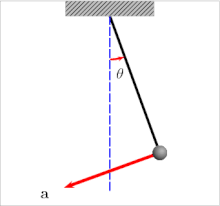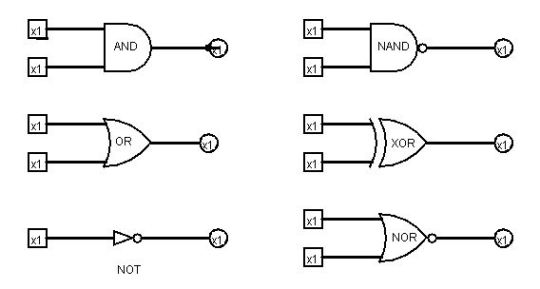#scalars
One of the greatest questions of all time, has to be “whatIStime?”.
Is time defined by what we see on our mechanical clocks? Does time stop? Does time have a constant speed? Does time have a beginning and end? There are countless questions we can ask about time but what are the answers?
We are all familiar with time, our whole lives revolve around it. Yet, we don’t know everything there is to know about it. We can start by measuring time.
Hours, minutes and seconds were first adopted by the Babylonians, some say they even invented time. However, they could have never actually invented time but they made a system for time. The days were 12 hours and the nights 12 hours. The hours were broken down into 60 minutes and those that needed even more precise numbers, they broke down those 60 minutes into 60 equally big parts (60*60=3600 seconds).
To measure the time they used the human heart-beat, one second was the duration of time between the two heart-beats of a healthy human (in a relaxed state).
The first mechanical clocks were invented in the 1200s. They had a pendulum that swung back and forth. There are different types of clocks and therefor the clocks we use in our everyday lives are referred to as mechanical clocks. Biological clocks are quite important to us, the heart-beat is an example of a biological clock and even a woman’s menstrual cycle is a biological clock (probably not the kind of clock you’d want to watch).
Today we also use atomic clocks, they’re so precise that they will either speed up or slow down by one second in a million years. They’re based on specific type of radiation from the Cesium atom. The Second is now defined by this radiation and perhaps in some years we’ll invent even better clocks with yet another definition of time. However by current definition, a second is the duration 9,192,631,770 cycles of radiation in a transition, or energy level change, of the Cesium atom.

Picture above: A pendulum showing the acceleration (a) and velocity (v) vectors.
Is time a vector or scalar quantity?
Firstly, scalars are quantities that are fully described by a magnitude alone (Time and Mass) Vectors are quantities that are fully described by both a magnitude and a direction (Velocity and Force).
Time is said not to have any direction, only magnitude. Therefor it is a scalar quantity.
Another question that tends to puzzle humanity is about space and it’s length. Is space endless? Has it always existed? Is space just the distance between two objects or is it something more? If you took away ever last atom and object, would there still be space or would there be nothing? Even then you can ask, what IS nothing? Does ‘nothing’ exist?
One thing is for sure, we can measure length. There are many different measurements for length all over the world; Feet, yards, centimeters, etc. However the result is always the same, no matter how you measure. The distance that is there, is there and will not change no matter which measurement you decide to use. However, the international measurement tends to be in meters. The meter is defined by the movement of light.
A meteris the length of light moving in free space during a time interval of 1/299 792 458 of a second.
Why do we use light to define certain measurements? The light speed in a vacuum is the same no matter when or where we measure and it doesn’t even matter if the light source is moving relative to us.
It’s extremely hard to be 100% precise when talking about length and all length measurements are a little uncertain. Your height for example, let’s say your height is 162 cm. That means you’re between 161,5 cm and 162,5 cm. However, we’re getting better and better at being even more precise and inventing new measurements that will help us in the future.
Sources:
http://www.physicsclassroom.com/class/1dkin/u1l1b.cfm
Physics book: H.Aschehough @ Co. [W. Nygaard] 2007
Beyond Descartes - Part 10
Taoism Meets Boolean Logic: Introduction

Logic gate symbols
(continued from here)
Before we can hope to comprehend Taoist arithmetic and geometry we need to take a short detour through Boolean logic. First and foremost, we need to see how Boolean logic[1] relates to Cartesian coordinates. That will provide what may be the best foundation available for understanding the Taoist approach to mapping of spacetime and the methodology which mandalic geometry derived from it.[2]
For Descartes, his coordinate system is one thing, his coordinate geometry another. For Taoism, the coordinate system is the geometry.[3] Boolean logic helps to explain how the two perspectives are similar, how different. Cartesian coordinates are static and passive. Taoist coordinates and the derivative mandalic coordinates are active and dynamic. In brief, the latter are changeable and self-changeable, a feat carried out by means of a brand of Boolean logic intrinsic to the system. Although it is true that Descartes’ coordinates do encode much the same information, that is not where their focus of interest lies. Accordingly they turn our own attention elsewhere and we overlook those inherent possibilities.[4]
Descartes’ geometric system is one based on vectors, that is, on both magnitude and direction. But in the scheme of things, the former has somehow eclipsed the preeminence of the latter in the Western hive mind. The opposite is true of Taoist thought and of mandalic geometry. Direction is uniformly revered as primary and prepotent. Magnitude, or scale, is viewed as secondary and subordinate. This mindset allows the Boolean nuances inherent in the system to come to the fore, where they are more easily recognized and deployed.
From such small and seemingly insignificant differences ensue entirely disparate worldviews.
(continuedhere)
Notes
[1] George Boole’s monumental contribution to symbolic logic was published in 1854 but was viewed as only an interesting academic novelty until the second decade of the twentieth century, when it was at last exhumed as a mathematical masterpiece by Whitehead and Russell in their Principia Mathematica.
[2] In Boolean logic (Boolean algebra) logical propositions are represented by algebraic equations in which multiplication and addition (and negation) are replaced with ‘and’ and 'or’ (and 'not’), and where the numbers '0’ and '1’ represent 'false’ and 'true’ respectively. Boolean logic has played a significant role in the development of computer programming and continues to do so.
[3] This is true also of mandalic geometry in its current formulation.
[4] This might be a proper place to proclaim that nature has little use for Descartes’ breed of coordinates, finding them far too stagnant and limiting for her purposes. Fortuitously, she devised her own choice coordinate stock long before Descartes thought to invent his.
© 2015 Martin Hauser
Please note: The content and/or format of this post may not be in finalized form. Reblog as a TEXT post will contain this caveat alerting readers to refer to the current version in the source blog. A LINK post will itself do the same. :)
Scroll to bottom for links to Previous / Next pages (if existent). This blog builds on what came before so the best way to follow it is chronologically. Tumblr doesn’t make that easy to do. Since the most recent page is reckoned as Page 1 the number of the actual Page 1 continually changes as new posts are added. To determine the number currently needed to locate Page 1 go to the most recent post which is here. The current total number of pages in the blog will be found at the bottom. The true Page 1 can be reached by changing the web address mandalicgeometry.tumblr.com to mandalicgeometry.tumblr.com/page/x, exchanging my current page number for x and entering. To find a different true page(p) subtract p from x+1 to get the number(n) to use. Place n in the URL instead of x (mandalicgeometry.tumblr.com/page/n) where
n = x + 1 - p. :)
-Page 293-
